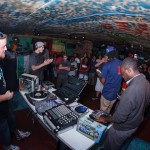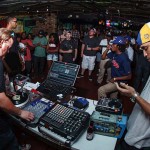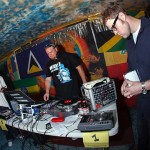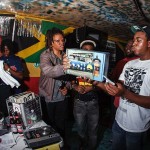Category Archives: Artist
The Studio Channel Shines Like Some Kind of Heavy Metal!
Check out the latest heavy metal recorded via the PreSonus Studio Channel from @guitarist_facts!
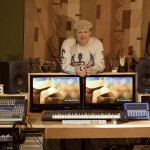
Scott Szeryk Opines on the StudioLive
 [This just in from Scott Szeryk, composer, six-string virtuoso and Royal Conservatory of Music gradate!]
[This just in from Scott Szeryk, composer, six-string virtuoso and Royal Conservatory of Music gradate!]
“Since switching over to the PreSonus StudioLive 24.4.2 Scott Szeryk has never sounded better in the studio or on the stage… Szeryk’s latest release “Guitar Manifesto” is evidence of just how good the PreSonus Studio Live sounds!” Give it a listen!
Since the mid-90s, I had been using the Tascam M3500 as my main mixing desk for the home studio, but was becoming a bit weary of its compatibility with modern-day recording setups. When I heard how great the XMAX preamps sounded on a StudioLive, I was instantly sold. Not to mention the insane power and functionality of the board, especially for live FOH! Changing over to the StudioLive 24.4.2was an easy, practical decision…The StudioLive not only shines in the studio but also in live applications! We were able to do spot- on monitor checks, even before the band had arrived at the venue for sound check, by playing back program material from shows previously recorded in Capture. The integration of Universal Control also meant that the onstage players could also control their own monitor mix via iPad SL Remote. There were a few times when we were able to Mix FOH on the iPad when there was a less-than-ideal location for the board at the venue. We rely heavily on the PreSonus StudioLive for recording all of our shows. Check out the latest DVD “Scott Szeryk live at Aeolian Hall!”
Simon Scardanelli Chooses PreSonus Studio One Professional 2. Here’s Why.
Simon Scardanelli of Dr. Scardo has been a DAW enthusiast since the clunky days of the Commodore 64. He recently changed horses mid-stream, dumping his Logic session and bringing all the tracks into Studio One Professional 2, which he has taken on as his main DAW. Here he discusses the resultant improvements to his workflow and productivity.
Flattering that a man of such long-running DAW experience would settle on PreSonus Studio One Professional 2. Give him a listen!
Halocene: Indie to the Core, Without The Attitude or Buddy Holly Glasses
Quote of the year comes from Halocene’s Brad Amick. “I can confidently say that 100% of every Halocene song that we’ve ever recorded has been through a PreSonus interface, be it the FireStudio or, lately, the StudioLive.”
That’s awesome. More awesomer, however, is the fact that Halocene has ownership of their entire operation. They write, produce, and record their own recordings on PreSonus gear. No big studios, no big labels, all DIY to the core… but they’re nice about it. Like, really nice.
And the result? The combo of good songs, PreSonus gear, and positive attitudes has gotten Halocene some big, big shows. They’ve opened for Blink-182, Jimmy Eat World, and had some killer Warped Tour slots… and they did it their way. See video below for more.
What other bands do you know that get to play shows like this that own their entire operation? NOFX and Manowar are the first that come to mind for me…
Who else?

Shea Michaels’ new Record: Nov. 2
PreSonus Artist Shea Michaels has a new record coming out… Now! He sent us a little sneak preview and talked a bit about PreSonus’ role in the production of adventures of CALICO JACK, described by Michaels as “A breezy blend of country and tropical flavored southern rock,” which sounds to me like the sonic equivalent of a Mai Tai alongside a shot of JD.
Hey PreSonus! Here are some of the details regarding the production of my upcoming album.
Presonus gear used:
-5 sets of PreSonus BlueTube DPs—We use these specifically as pre-amps for the drum microphones. We do not utilize the tube drive for any of the drum mics, except for the kick drum. We engage the 80Hz roll-off functions on all the others.
-PreSonus Eureka—used for direct inputs such as bass guitar and occasionally electric guitars when we feel the need to use software amp models for a certain sound a song may need. Also used as a pre-amp for drum/room mics.
PreSonus FaderPort—self explanatory!
PreSonus AudioBox USB/Presonus HD7 headphones—I used these two on song ten, on the album, which is an acoustic song titled “Didn’t Take Long.” This song was recorded at my writing station, in my home, using the AudioBox USB, PreSonus HD7 Headphones, Audix CX212B condenser mic, an iMac, and PreSsonus Studio One Professional 2. This is the only song on the album recorded in Studio One 2, quite frankly because the project was under way well before I downloaded a copy of the latest version. Now that I’ve attended PreSonsSphere (which was absolutely par excellent) I have a better understanding of this DAW. I intend on recording my next project entirely in PreSonus Studio One Professional 2.5.
The beauty of being a PreSonus user is getting access to more than one license of the software. This allows me to install Studio One 2 on my writing station and in my studio. While supplying the tools for the trade is a bonus, the heart of PreSonus literally has a strong rhythm. What else could an artist ask for than to be a part of a company that has a crew of world class musicians running the business end of it all.? This thing is groundbreaking, and about to form a few mountains. Honored to be a part of it.
Added Bonus: Shea was kind enough to share his drum microphone selection and placements!
-Kick (Beta 52) – Sound hole; off-center facing beater head
-Snare Top (SM57) – A couple of inches up angled toward center of snare
-Snare Bottom (SM81) – A couple of inches away from center toward snares; invert phase
-Hi Hat (SE Electronics SE1A) – angled about 45-degrees toward opening but not directly on opening to reduce air from closing hats
-Tom 1 (Sennheiser MD 421) – angled toward mid-center
-Tom 2 (Sennheiser MD 421) – angled toward mid-center
-Overheads – Stereo Pair in XY Configuration (Oktava MK 012 cardioid capsules) – almost directly center of drums approximately 2’ or so above kit to capture more of a stereo image of drums
-Room Mic (Neumann U87) – As far from kit as possible, while allowing a couple of inches from the wall to avoid phasing issues. Trying to create a big room sound with software reverb.
Sounds good to us… but hear for yourself!
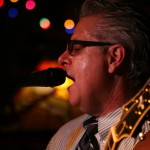
The Diverse Tastes of Scott Detweiler
[This just in from Scott Detweiler, New Orleans composer, lyricist, and PreSonus advocate. He had some nice things to say about our hardware, software, and foodware via e-mail, which makes my blogwriting REALLY easy.]
Hi guys, hope you are doing well.
I wanted to give you and update on Nimbit and on my new BlueTube DP V2!
Last year I ended my relationship with my old online distribution account for several reasons, so I was really happy when I received your email regarding the Nimbit accounts for PreSonus Artists… but I wasn’t sure what to expect.
So far, we have uploaded two of my albums to Nimbit, and all of the descriptive info. Nimbit is great! It’s very user-friendly and offers many more options than other online distribution platforms. It’s a great product! We will go live when we get three more CDs up. The uploading of my entire catalog will take some time (13 already-released albums and about another dozen or so unreleased!) but hopefully it will all be up within the next few months. I will also provide more feedback to you after we go live. Thanks to PreSonus and Nimbit!
>As for the BlueTube DP V2, I use it for live shows: one channel for guitar, and the other for vocals. I like it better than my old preamp for several reasons.
I notice an increased fullness of the voicing and more clarity in the higher range of my guitar.
The power cord is much more rugged and hearty, and is not as delicate as the electrical cord that came with the previous model. There were a couple of times when the power cord got kicked out. As said, I use it for live gigs—not to say that the old cord was a dealbreaker, but for live gigs the new one is really durable—it’s inevitable that sometimes the end that plugs into the power strip accidentally gets stepped on and pulled, but this cord can take it.
Believe it or not, I liked the owner’s manual! It is way more user-friendly! I have never been a very technical guy. Not to say that the old manual was Greek to me, or anything like that… but the new manual is laid out really well and the organization of the information works better for me.)
Also, the unit seems to be just a little bit bigger. That’s good because it sits in myeffect rack better!
Last but not least, the Jambalaya recipe. I cooked some up and it’s great!
Again, thank you and thank PreSonus. Please give my regards to Mark Williams. I look forward to seeing y’all at NAMM. I will be sure to pass by and say hello!
PreSonus Shines at The New Hampshire Music Educators Fall Conference
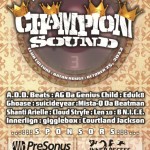
Champion Sound Rocks Baton Rouge… Monthly!
Champion Sound Baton Rouge is a producer battle and artist showcase that happens on the last Thursdays of every month at Club Culture (450 Oklahoma St., Baton Rouge LA 70803). The first competition was held on August 30th, 2012. The beat battle and showcase will run through November 2012 before taking a two-month hiatus that aligns with the local schedules of Louisiana State University and Southern University.
The creators of Champion Sound are Amahl Abdul-Khaliq (AF THE NAYSAYER) and Jason Barefield (Field / Kladni Figures). This pairing brings a unique perspective, as it combines AF’s producer battle-tested minset with Field’s 15+ years’ experience in arranging, performing, and promoting shows.
With the exception of the first event, which was marred by Hurricane Isaac, the available contestant slots have been filled to the maximum! Producers are coming from far and wide, including Dallas, Houston, Shreveport, New Orleans, and Chicago. Word has begun to spread about not only the level of the competition, but the quality of the event. High-level sponsorship from PreSonushas helped Champion Sound garner serious attention and attract producers from several different genres of electronic music and experience levels.
The event also brings in local talent from surrounding areas to perform original material. Some of the past performers include rappers Ronny My, Randy Savage, A.R., James Jackson, Marz the Superior, and Luke St. John. October guest artists includes Truth Universal and Marcel P. Black.
Champion Sound uses a three-judge format, two of them being staples, and one guest judge per month. The steady judges are Baton Rouge’s own G.O. DJ Automatik and Rules of Culture’s in-house producer/engineer Scooter Jackson. Guest judges coming up include DJ Matt Bruce (October) and November will showcase the talents and ideas of legendary lyricist/MC Akil of Jurassic 5!
Past guest judges have included:
- Producer/composer DJ Ribbz (Kryptic Formations)
- New Orleans powerhouse DJ, DMC (Disco Club Mix) Organizer
- Tony 5kratchere (Red Bull Music Academy representative)
- 1st: B. Brooks: Baton Rouge, LA
- 2nd: A.D.D. Beats: Gonzales, LA
- 3rd: Eduk8: Baton Rouge, LA
Below are photos from the September event so you can get an idea of what you might be in store for should you choose to attend the next time around! Come one, come all!
Fred’s Back! This Time He’s Got an iPad DAW Control Video!
Remember Fred, who did the TubePre V2 unboxing and comparison vids from a while back? He’s back, and so is his video camera, and so are his mad talents for making videos that are compelling and educational. He’s put together a great video illustrating iPad DAW control via WiF, using the xDisplay remote monitor app.
Two birds, one stone: He also regaled us with his story of how he came to find Studio One… and why he stuck with it!
CTRL-C, CTRL-V:
I was using an entry-level set up of Mixcraft as a DAW with a Lexicon Alpha USB Interface. I wanted to move to an interface that could provide phantom power and better audio quality. PreSonus had just announced the VSL series of interfaces. Reviews of the previous interfaces were positive so I bought a AudioBox 22VSL—wish I had bought a 44VLS for extra inputs. I liked the VSL software concept that allowed virtual mix control over inputs signals. It included Studio One Artist but at the time I thought Mixcraft was giving me what I needed. I started working with the 22VSL and immediately noticed the difference. With the old interface I was constantly power cycling, reboot, etc to keep things running. The 22VSL was rock solid, turn it on and it worked the entire session.
I started having major problems with Mixcraft experiencing CPU crackles/pops and also critical file corruption issues which caused the loss of audio tracks and even entire projects. I decided to try the free copy of Studio One Artist that came with the 22VSL. It was quickly evident that I had made a light year jump in DAWs. No more crackles, pops or corrupt files. More importantly, the features and sonic gains on recordings were incredible and the integration with 22VSL was seamless. As I learned more about Studio One I realized I was now using a world class DAW. Wanting more features, I upgraded to Producer and haven’t looked back.
When I compare the new tracks we’re producing with the AudioBox 22VSL/Studio One to what was produced with the old set up, I want to go back in time and re-do everything using 22VSL and Studio One. The next phase for my home studio will be to add a StudioLive 16.0.2 using FireWire. There is no question in my mind that Studio One will be the core of that set up as well.
Hero’s Last Mission and the Photo Op of the Year
Art Padilla, Hero’s Last Mission



